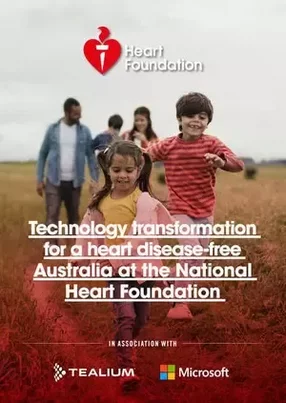National Heart Foundation of Australia: an agile technology transformation
With heart disease the biggest single killer of Australians, the National Heart Foundation of Australia is leading the charge to change this frightening statistic – from fundraising and research to providing vital awareness and information about preventative health, the 60-year-old charity won’t be stopping any time soon. In fact, it is undergoing a significant technology transformation to enable its 250+ strong team to serve customers and the Australian public even more effectively.
Sharing the organisation’s vision of an Australia free of heart disease is Shane Riddle – a CIO named among the top 50 in Australia – who joined on a temporary basis but decided to stay at the inspiring non-profit. “I got in very quickly and hit the ground running,” he recalls. His main objective as leader of the company’s IT operations was to help the National Heart Foundation deliver on its key objectives. While the previous team had been focused on “keeping the lights on,” Riddle’s role evolved in the same way the CIO remit has across all industries: to create an organisation enabled by IT. With traditional elements such as the service desk and security functions outsourced, Riddle and his team now focus on ensuring the entire business meets its yearly objectives – through technology.
Moving technology to a strategic function within the Heart Foundation meant the IT team to undergo a reorganisation which reflected what was going on within the business as a whole. The foundation operated in a federated model across Australia with business functions in each state, but technology has assisted in bringing the organisation together to promote collaboration and efficiency. One example of this was the organisation’s move to the cloud, which Riddle took control of upon joining the organisation. “They were getting bogged down,” he comments. “I assumed the role of project manager working with our vendor to ensure everything was done in a timely manner, from testing to getting us on the cloud.” First, the foundation migrated to OneDrive, then moved to 365, SharePoint, Microsoft Teams, and eventually the full range of Microsoft Productivity tools.
Riddle mentions managing teams in a charity can be very challenging, where people are particularly passionate about their end goals. “You’re working with people who want to make a difference, and we try to do everything for everyone – which sometimes dilutes what we’re trying to do,” he comments. “Our One Heart Strategy is all about placing focus on areas that have the greatest impact.” Moving to the cloud was key to unifying the foundation’s business process and the way it engaged with customers. “The previous work practices, the way we collaborated, the way we engaged with customers and stored our data all represented our old business model – it was disjointed, to survive as an organisation in a very competitivity environment, we needed to change.”
Riddle therefore had to think carefully about whether any one technology would actually solve the organisation’s problems before installing it, and made evaluations based on every aspect of the business. It was also important not to view technology as isolated from the people at the heart of the charity. “Technology was one component, but there was also the organisational process and culture.”
Conducting a high-level analysis, Riddle concluded that developing a project to provide a “single view of the customer” was the best way forward in this newly tech-enabled company. In a charity sense, customers are usually donors to the organisation, but Riddle stresses that there are actually 52 different types of customer served by the National Heart Foundation – and it was important to understand all of these, from various internal perspectives. Initially, he recalls, “We had a very short view of what we call a customer typically using only a financial lens – the lifetime of a donor averaged about seven years. That’s great from a point of view of understanding donor patterns, but donors are only one of those 52 definitions,” he explains.
“I wanted to create a platform where we engaged with our customer at every point in their lifetime in order to deliver something at the appropriate time with the appropriate message, material, product or service – whatever that may be.” Riddle’s development of this vital platform took five stages, the first of which was a discover stage. This involved creating a “roadmap” of how information and data was obtained, why it was collected, as well as how it moved across the organisation and used.
The second phase involved understanding who the customer was. “Why do they choose to engage with the Heart Foundation? What is our point of difference? What are they looking for when they come to us?” This involved deep analysis, understanding what the business did, and examining its customer base until those 52 different definitions were formulated. “When creating a single view of the customer, it’s important to understand the context of the customer for internal users,” says Riddle, “because when we create something and then introduce it, we need to represent what they see as their customer. That is important.”
The third stage – at which point Riddle had to gain approval at board level to move past – was “very much getting down into the weeds.” This involved examining business processes to find a product that would deliver on all the needs that had been uncovered so far. “A lot of that informed the business case and our request for proposal (RFP) for various vendors,” he explains. “We had a closed selection where we identified key vendors across the industry that we felt would be able to deliver, or had insight to deliver, what we were trying to create.” Of 15 nominated vendors, 10 put forward a proposal which were narrowed down to a final three that were then challenged to create prototypes. This lengthy process outlines Riddle’s approach to vendors. “I’m fairly tough in trying to negotiate something that works for us,” he says, qualifying: “I understand the business they’re in as well, so it has to be fair. I think when you’re truthful with your business partners, and you say ‘we want this, but this is what we can afford or are capable of at this point in time, but we want to bring you on the journey and we can see the growth aspect,’ partners buy into that and it’s mutually beneficial.”
To complete this undertaking, the National Heart Foundation needed the support of key partners to the business to assist with this transformation. Microsoft for the company’s cloud migration, as well as Microsoft Azure has been utilised for the development of the Single View of the Customer platform. Riddle outlines its scalability and access to Azure Services which allowed prototyping, working towards a full solution, growing the environment and services as needed. As this has grown, the organisation has also been utilising Data#3 as a Microsoft Preferred Partner to navigate the intricacies that come with building out a complex environment. “Brennan IT also play a very big part in actually allowing us to focus on what the business needs,” Riddle adds. “They look after the back office operating our service desk and offer additional support as needed across our infrastructure,” he explains, reiterating the way his team’s role has gone from “keeping the lights on” to thinking about how technology can truly drive change across the organisation. Another vendor which was an integral part of forming the Single View of the Customer platform is Tealium – perhaps the best example of the vendor management strategy embraced by Riddle. “We were impressed by their buy-in because not only did we interview them, but they interviewed us to see if their business was suitable to what we were trying to achieve. I got a lot of comfort out of that,” he comments. “We were entering a new space when we engaged with Tealium so they were fantastic taking us on that journey as well – their implementation and the support they offer us as we go through that learning curve has been fantastic.”
With vendors and products selected, the fourth phase NHF went though was development and implementation, bringing in BAs, developers, data scientist, testers and even an Agile coach to ensure the technology transformation ran smoothly among staff, too. This laid the path for the currently ongoing final stage – “taking all those learnings we went through in phase four and actually doing something about that.” For Riddle, getting passionate people on board with the changes the organisation was experiencing – in terms of bringing customers to a single point as well as unifying the organisation itself – was key in managing the significant culture shift involved in any technology transformation. “You need bottom-up buy-in because you’re looking at people’s processes, and change management is a key component of this. You’ve got to be aware of how it impacts them and how they are involved in the whole process,” he explains.
“I try and understand the emotional life cycle people go through with change,” Riddle adds. “Another aspect is when you communicate with people, people like different mediums – some like written word, others like face to face. Some like to be in a group and sit back and listen, others like it to be more intimate or a one-on-one discussion. I try to build all those aspects in and communicate on a level people actually want to receive so they take in what I talk about.” At the foundation’s Melbourne office, the IT team is located in the centre of the building, which Riddle believes symbolises its place at the heart of the business as well as encouraging people to ask questions and understand what they do.
For Riddle’s team, communication involves gathering together every morning for a few minutes, a part of the Agile philosophy he’s brought in. “People talk about what they did yesterday, what they didn’t get through and what they’re going to do today. That gets communication working across the team – people can chime in if they hear of a roadblock and offer suggestions. Other groups have now started to pick up on that as well and for me that was encouraging as I didn’t want to push Agile. It was more about introducing it to staff, showing how it’s used so people get serious about it and want to try.”
Across the whole country, as a newly unified and tech led organisation, the foundation is all set to relaunch with what Riddle calls a “revitalised” brand. “With single view of customer, we’ve built a new platform with which we can totally engage the customer, and start measuring how they’re choosing to engage with us,” he explains. “Ultimately, we want to have an individual conversation with those people, so we can start dynamically understanding their behaviour, and dynamically changing the way we approach that through the variety of media and information we supply, tailoring it back to what their need is at any particular time.”
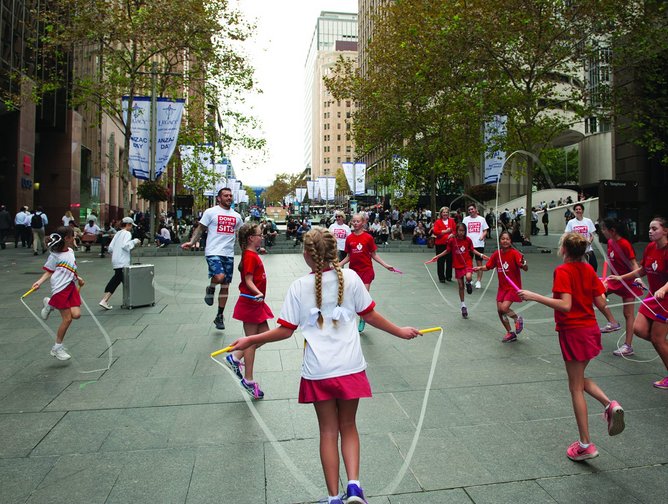
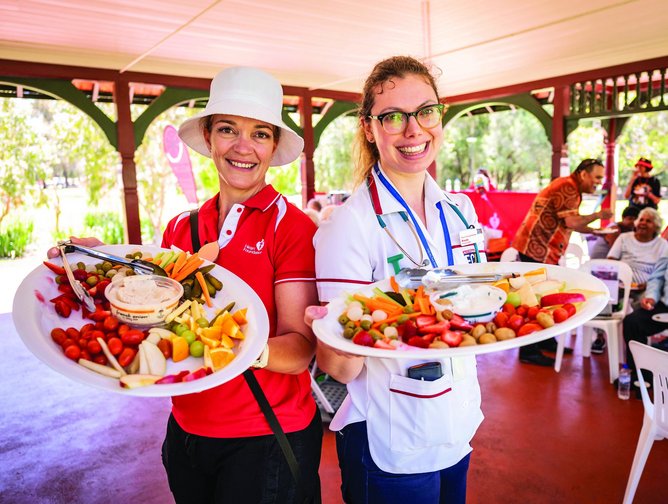
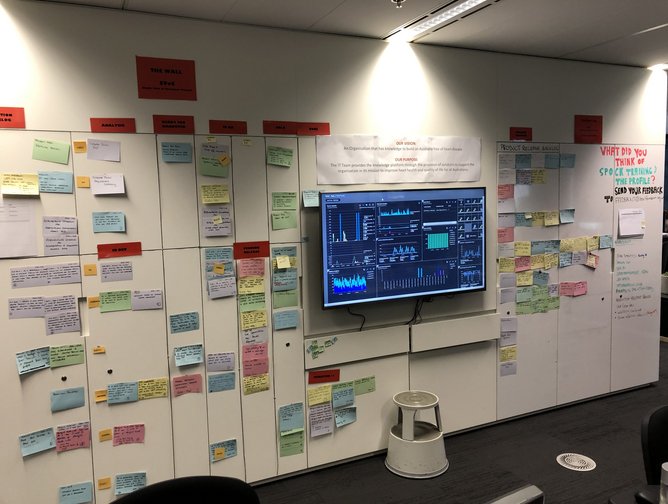

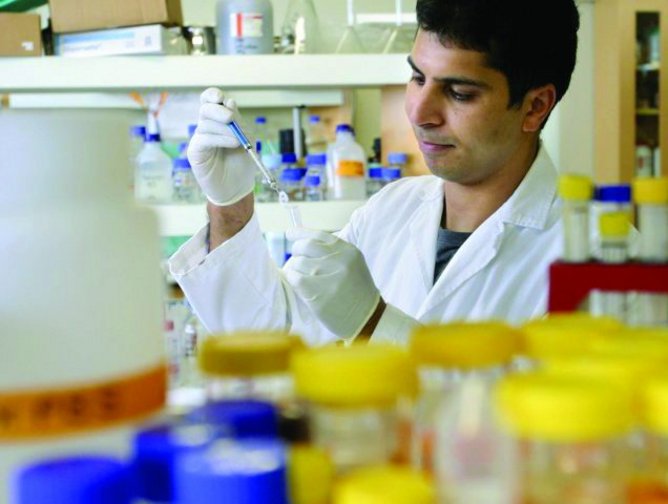

- Top 100 Women 2024: Tanja Rueckert, Bosch - No. 6Digital Transformation
- Coforge: Arming Financial Firms with the Tools to InnovateDigital Transformation
- Coforge: Arming Financial Firms with the Tools to InnovateDigital Transformation
- MWC24: Harnessing AI to Modernise Telcos with Tech MahindraDigital Transformation

